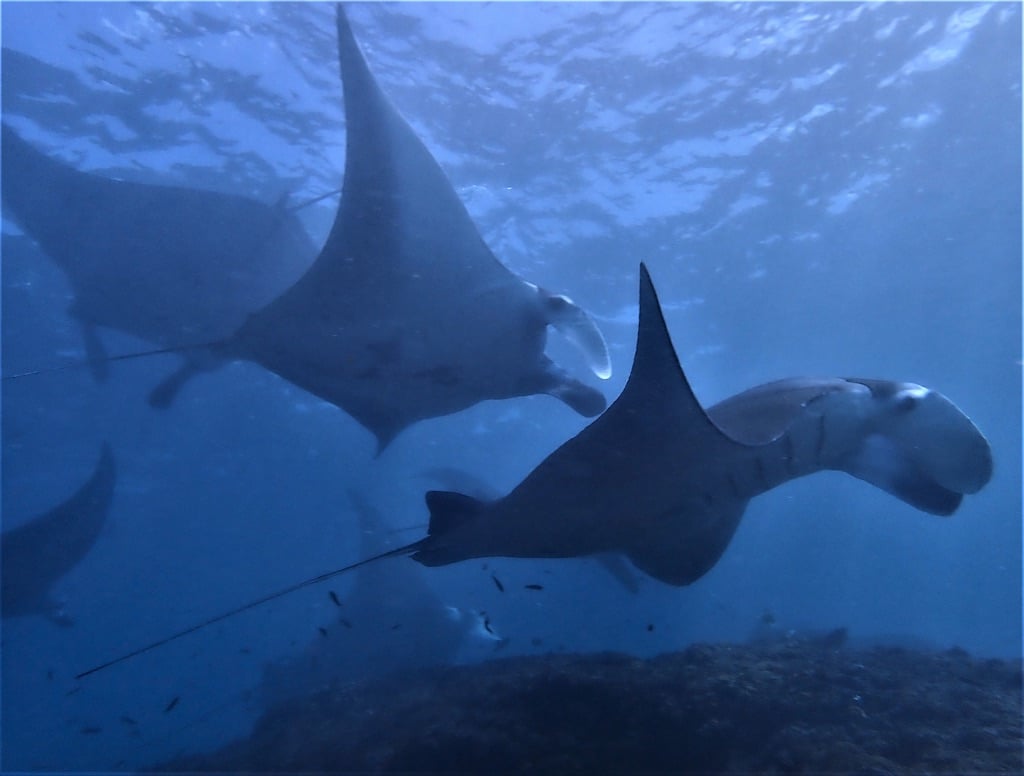Diving Manta Point, Nusa Penida
Manta Point is one of the most popular dive sites on Nusa Penida Island. It offers a unique chance to dive alongside majestic manta rays almost every day of the year. The site’s name comes from the community of manta rays that inhabit the surrounding deep waters. Divers and snorkelers are often treated to a breathtaking sight as these creatures rise to shallower waters, where small reef fish assist them in cleansing themselves of parasites. The dive typically begins at a sandbar, leading to the first of several cleaning stations.
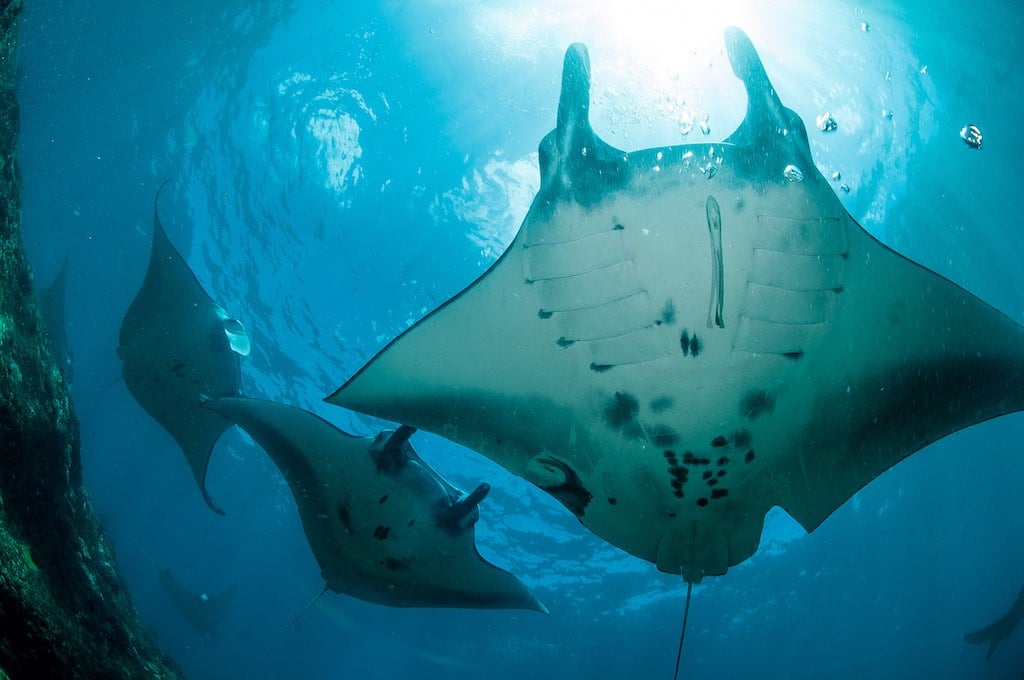
What to expect at Manta Point Nusa Penida
The show begins at a massive coral formation where we see the Mantas flying around. After a while, we usually travel across a vibrant and expansive coral plateau to reach the second cleaning station. There, we take in the diverse marine life present at Manta Point. Finally, we venture to the wall to discover specific rocks and formations where we can spot reef sharks. And sometimes bigger stuff such as Mola Mola or Whale Shark.
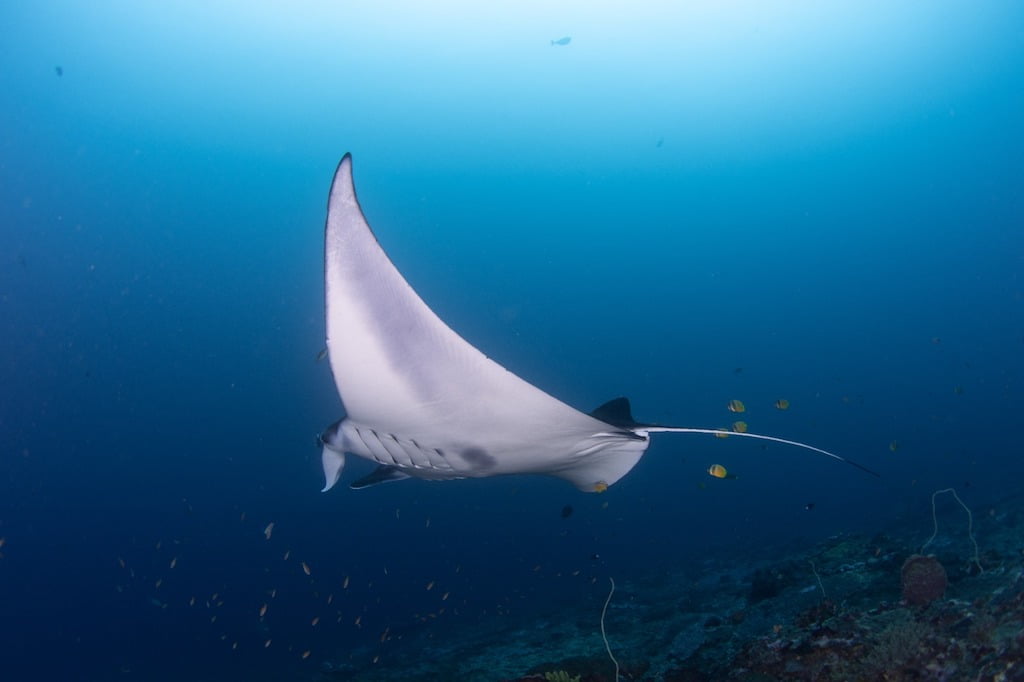
Manta Point is renowned for its manta rays, but it is also an incredible dive site where a variety of marine life can be encountered. Divers often spot bamboo sharks and blue-spotted stingrays here. Additionally, smaller organisms like rare species of nudibranchs, Zanzibar shrimps, and porcelain crabs can also be highlights of the dive. Recently, we had the pleasure of encountering an impressive crown jellyfish. We also regularly see Mola Mola on the wall during the season and we even saw a whale shark! For more information about the marine fauna in Bali, you can read this guide on diving in Nusa Penida.
What is a manta ray cleaning station ?
The site is home to several coral heads that function as cleaning stations for manta rays. But what exactly is a cleaning station? It’s a small ecosystem where manta rays continuously swim around the coral heads, allowing cleaner fish—primarily wrasses—to remove bacteria and other parasitic microorganisms from their bodies. Additionally, plankton is abundant in these areas, and manta rays can consume it while being cleaned. For more information about manta rays and their cleaning stations, read on.
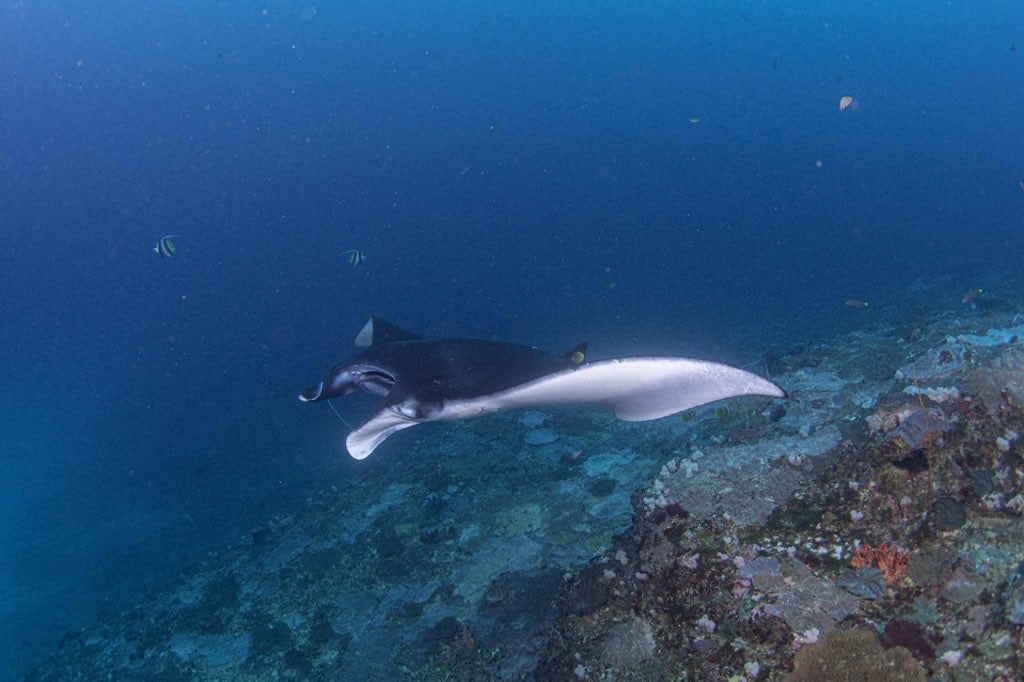
Where is Manta Point Nusa Penida?
Manta Point is located almost in the center of the southwest coast of Nusa Penida Island. If you travel by land to Peguyangan Waterfalls, you’ll encounter a sign on the left directing you to Manta Point. Near a white temple, you can enjoy a breathtaking view of the sea from the cliff, where you may spot manta rays swimming below. Please note that there is no access to the sea from this viewpoint; to swim, snorkel, or dive with the manta rays, you’ll need to take a boat.
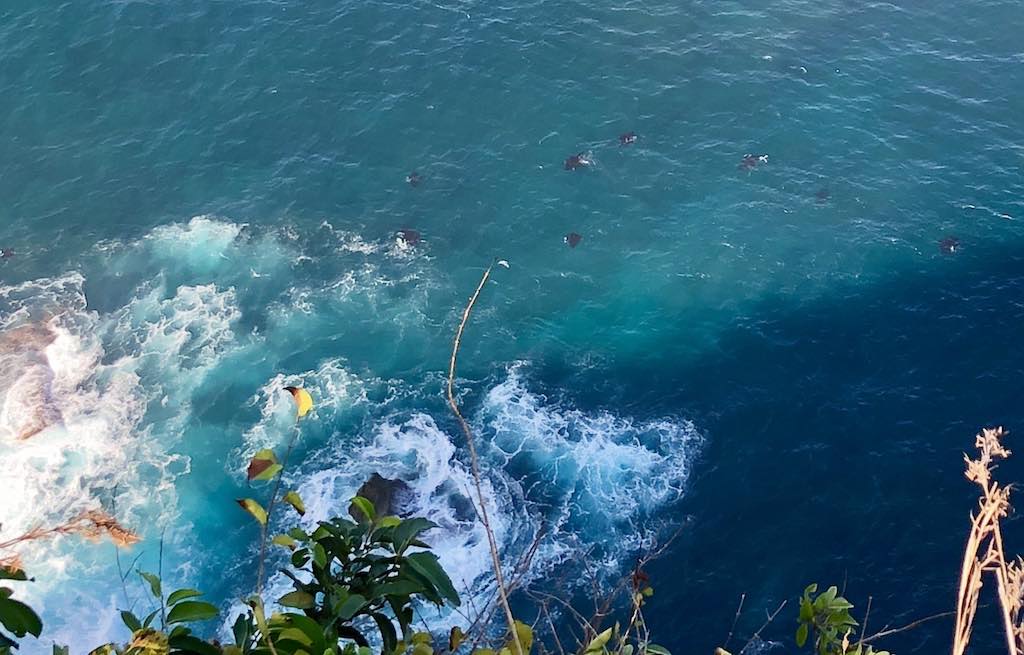
The navigation to Manta Point will take 45 minutes from Toyapakeh in Nusa Penida and about the same from Sanur in Bali. It is a nice boat trip as you will see, from the boat, most of the famous sites of Nusa Penida island. Just after leaving Toyapakeh, you will pass by Adiwana Warnakali dive resort, Gamat Bay, Amok Sunset, and then Crystal Bay. You will also have a look on the right at the islands of Nusa Ceningan and Nusa Lembongan.
We will then turn left and pass by Angel Billabong and Broken Beach, then Kelingking Beach and finally Temeling and Peguyangan before reaching our destination. On the way back, we usually take a photo in front of Batu Bolong.
Can you snorkel at Manta Point? Manta Bay or Manta Point ?
Snorkeling companies typically take visitors to Manta Bay, which is located in front of Broken Beach, because it is closer. There is about an 80% chance of seeing manta rays there, although you may encounter many boats that are also trying to spot them. Once the captain of your boat spots a manta, they will likely encourage you to jump into the water for a brief chance to swim with the manta, amidst the other boats and snorkelers. I tried it and I found this experience a little bit stressful and dangerous. That is why some snorkeling companies started to bring snorkeling guests to Manta Point. Snorkeling with manta rays at Manta Point is indeed much better and safer, as snorkelers are briefed and both captains and snorkelers are usually more respectful of the Mantas.
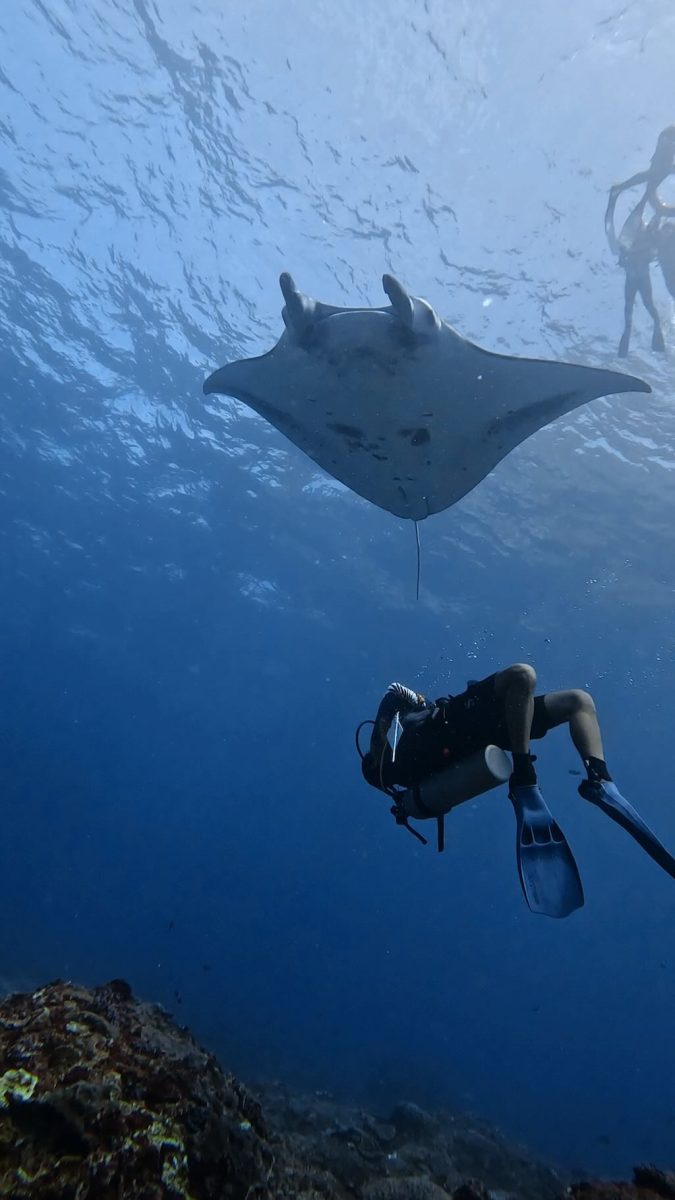
How to choose snorkeling or diving at Manta Point ?
Snorkeling and diving offer two distinct but equally breathtaking ways to encounter manta rays. Snorkeling is ideal for those who prefer to stay near the surface, providing a chance to observe these graceful giants gliding below in the crystal-clear waters. The experience is thrilling yet accessible, making it perfect for beginners and non-divers. Choosing a guided tour is recommended to ensure safety at all times.
On the other hand, scuba diving at Manta Point allows for a more immersive experience, bringing divers closer to the manta rays at their cleaning stations. Diving offers longer, deeper interactions and the chance to explore the surrounding marine biodiversity, including reef sharks and vibrant coral formations. While snorkeling provides a quick and exhilarating glimpse of the mantas, diving at Manta Point is the ultimate way to fully appreciate their size, elegance, and behavior in their natural habitat. We will be pleased to introduce you to discovering diving with the manta rays! It’s really a great experience.
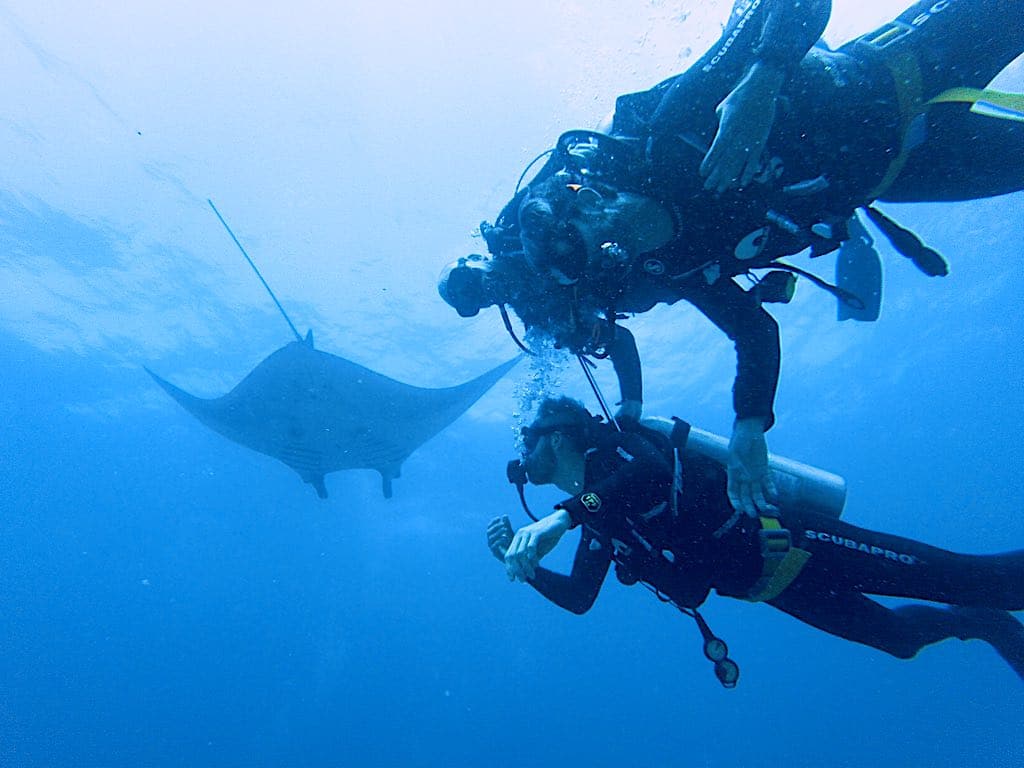
How deep is Manta point ?
The shallowest area of the bay is 8 meters deep, while the maximum depth is 12 meters. This makes it an excellent location for discovery dives, as manta rays are typically found between the surface and 10 meters deep. For those seeking more challenging dives, a much deeper section of the bay reaches depths of up to 40 meters and features various underwater formations and reliefs.
What is the best time to dive Manta Point Nusa Penida?
Mantas are typically present throughout the year, except during their breeding season when they gather in deeper waters to mate. Pollution, water temperature, and weather conditions can negatively impact their presence. Additionally, the sea may be rough at times, making it challenging to go out. We will inform you when conditions are not ideal.
Manta Point has become increasingly busy, often filled with other divers. To avoid the crowds, Dune Penida typically adjusts the timing of its dives, aiming to arrive either before or after the peak hours of other dive centers. Additionally, it explores other areas of the dive site if it becomes too crowded.
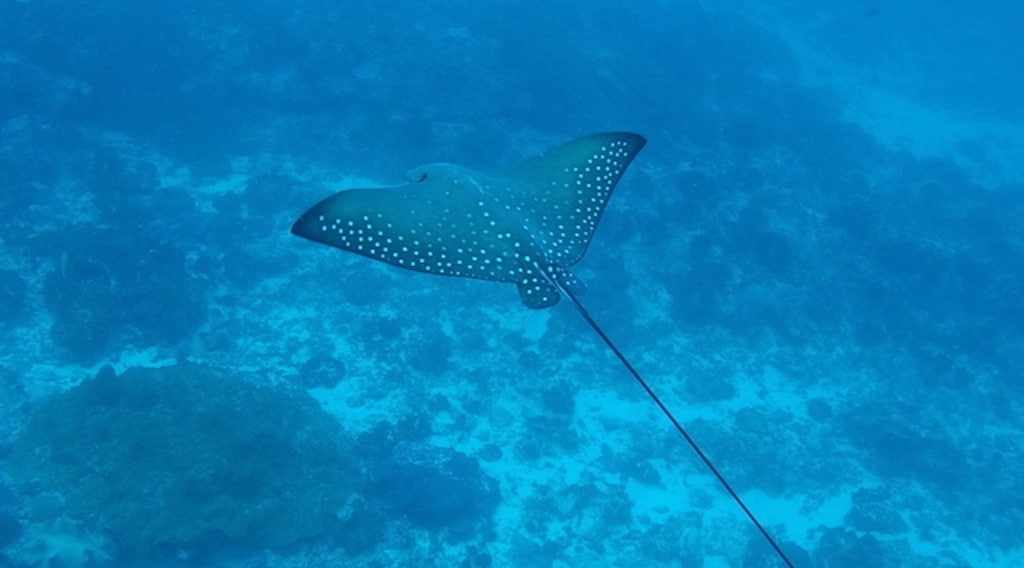
Manta Ray or Manta Globula ?
Each Manta is unique. It is indeed possible to identify each Manta with the patterns of their belly, like an identity card or a fingerprint. This way, divers can easily count them or even recognize them. At Warnakali, we like Black Mama, which is totally black and huge. Her babies are also almost totally black, but smaller.
You will probably not be able to make the difference between manta ray and manta globula, which are smaller and have a ventral mouth.
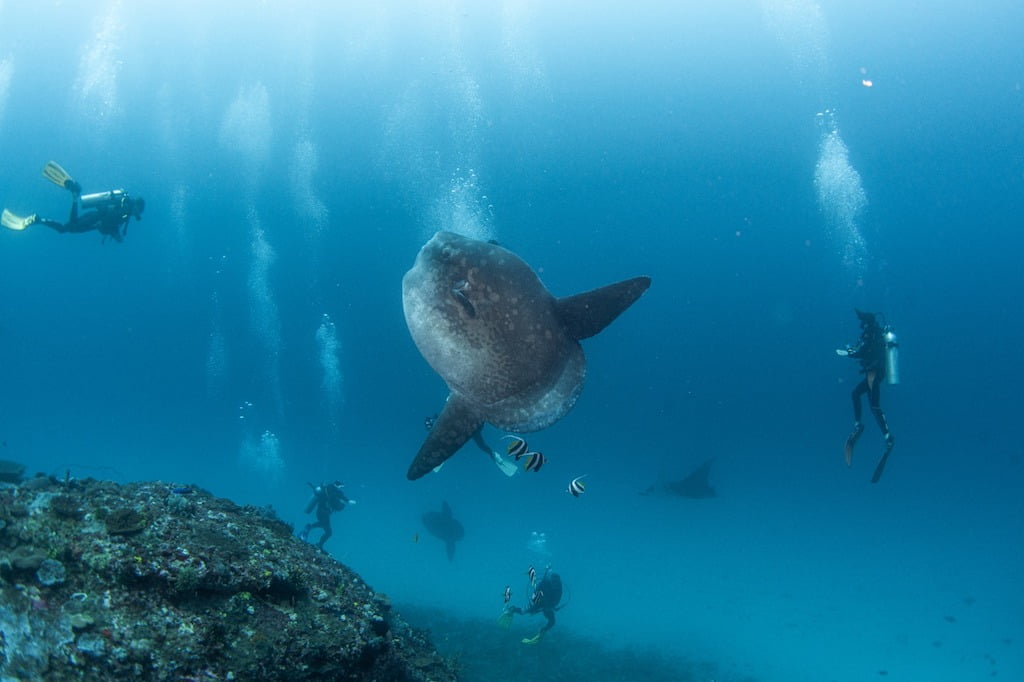
At Manta Point, it’s not just Mantas!
A little away from the cleaning stations, there are caves that are perfect for a leisurely exploration. This site is also incredibly diverse, featuring a rich array of macro life. You can spot crabs, the famous clownfish, surgeonfish, butterflyfish, rabbitfish, and all the endemic marine life of the island. Recently, we had the pleasure of encountering a stunning crown jellyfish here.
You can also catch a glimpse of stingrays, eagle rays, marble rays, and, with a bit of luck, blacktip reef sharks and bamboo sharks. It’s also possible to encounter turtles and a variety of nudibranch species, some of which are more or less rare.
And, to add to the excitement, we’ve had several encounters with Mola Mola here as well! And even on September 13, 2023, a whale shark!
Characteristics of Manta Point
Type of diving: reefs, photography, training, fish identification, macro
Depth: 8 to 35 meters
Level required: from discovery divers to experienced diver
Visibility: 10-20 meters
Current: no to weak, swell possible
Access: 45 minutes of navigation from Toyapakeh, very nice boat trip along the west coast of Nusa Penida island
Temperatures: 20 to 27 °
Fauna and Flora: Manta ray, Sting Ray, Marble Ray, Eagle Ray, Black tip shark, Bamboo shark, crabs, clownfish, fish surgeon, butterfly fish, rabbit fish
Best time: Diving all year
